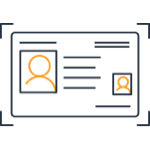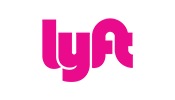Event Overview
Date: Tuesday, May 18, 2021
Time: 9:00 AM – 1:00 PM Pacific Time | 12:00 PM – 4:00 PM Eastern Time
AWS has helped thousands of organizations migrate and modernize enterprise applications in the cloud to reduce costs, deliver new business intelligence, and modernize application development.
Join our online event to accelerate your migration of Windows, SAP, VMware, and Mainframe workloads. This free, online event provides you with the best practices for migrating business-critical applications, data, and infrastructure to the AWS cloud, and leveraging AWS industry-leading innovations in infrastructure and cloud-native services to transform your business. Whether you are exploring cloud options, beginning to build on AWS, or expanding your cloud practice, this is a great event to learn about the impact of migrating mission critical enterprise workloads to AWS.
Register Now:
How To Register
- To begin your registration for Migrate to AWS Online Event, complete the form on the left.
- After clicking the Next button, you will be directed to the next page to create a password. It’s important you use the same email address you used on the registration form. This will be the email and password you will use to log into the event on May 18th.
- After creating your password, an email will be sent to the address you used to register to verify your identity. You will need to click the verification link found in the email to complete your registration. Please note: you will not be able to log into the event on May 18th unless you verify your registration.
- After you verify your registration, an email will be sent to confirm your event registration.
Temporibus Autem Quibusdam Aut
Lorem ipsum dolor sit amet, consectetur adipiscing elit, sed do eiusmod tempor incididunt ut labore et dolore magna aliqua. Ut enim ad minim veniam, quis nostrud exercitation ullamco laboris nisi ut aliquip ex ea. commodo consequat. Duis aute irure dolor in reprehenderit in voluptate velit esse cillum dolore eu fugiat nulla pariatur. Excepteur sint occaecat cupidatat non proident, sunt in culpa qui officia deserunt mollit anim id
- At vero eos et accusamus et iusto odio dignissimos
- Ducimus qui blanditiis praesentium voluptatum
- Deleniti atque corrupti quos dolores et quas Molestias excepturi sint occaecati cupiditate non
- At vero eos et accusamus et iusto odio dignissimos
- Ducimus qui blanditiis praesentium voluptatum
- Deleniti atque corrupti quos dolores et quas Molestias excepturi sint occaecati cupiditate non
Event Agenda
|
9:00 AM - 9:30 AM
PDT |
Keynote: Migrate to Innovate: Transforming Enterprise Workloads in the AWS Cloud |
|||
| TimeT | Windows Track | SAP Track | VMware Track | Mainframe Track |
| 9:30 AM - 10:00 AM | How to close your datacenter - Lead your organization to a cloud migration | SAP Migration Approaches and Considerations |
Best practices for migrations using VMware Cloud on AWS | Mainframe workloads' fast track to cost efficiency, risk mitigation, and agility with AWS |
|
10:00 AM - 10:30 AM
|
MSFT Licensing 101 on AWS: How to optimize new and existing licenses |
Going Beyond Infrastructure for SAP on AWS |
Why business leaders are choosing VMware Cloud on AWS | Why AWS for mainframe workloads modernization? |
| 10:30 AM - 11:00 AM | Hand to hand combat with your SQL costs: How to pre- and post-migration optimize your SQL environment |
Accelerate your large-scale migration with VMware Cloud on AWS and HCX | How to migrate your first mainframe workload | |
| 11:00 AM - 11:15 AM | Break |
Break |
Break |
Break |
| 11:15 AM - 12:00 PM | Manage your workloads for success: How Windows administrators can use cloud native management tools on day 1 |
SAP Automation and Operations Modernization | How to plan for your migration with VMware Cloud on AWS | |
| 12:00 PM - 12:30 PM | Catch more fish with a modern .NET - Where is my tackle box? | Enabling Data-Driven Enterprises with Data Lakes for SAP on AWS | How to architect hybrid applications between virtual machines and AWS services | |
| 12:30 PM - 1:00 PM | Modernize your Windows applications - How your organization can innovate faster | AWS Service Updates for SAP Customers | How to plan to migrate your VMware Horizon VDI to AWS | |
Track Details
- Windows Track
- SAP Track
- VMware Track
- Mainframe Track
- Track5 Session 1
- Track6 Session 1
- Track7 Session 1
- Track8 Session 1
- Track9 Session 1
- Track10 Session 1
Windows Track
How to close your Datacenter - Lead your organization to a cloud migration (Level: 100 - Foundational)
MSFT Licensing 101 on AWS: How to optimize new and existing licenses (Level: 200 - Intermediate)
Hand to hand combat with your SQL costs - How to pre- and post-migration optimize your SQL environment (Level: 300 - Advanced)
Manage your workloads for success - How Windows administrators can use cloud native management tools (Level: 300 - Advanced)
Catch more fish with a modern .NET - Where is my tackle box? (Level: 300 - Advanced)
Modernize your Windows applications - How your organization can innovate faster (Level: 100 - Foundational)
SAP Track
SAP Migration Approaches and Considerations (Level: 300 - Advanced)
Going Beyond Infrastructure for SAP on AWS (Level: 200 - Intermediate)
SAP Automation and Operations Modernization (Level: 200 - Intermediate)
Enabling Data-Driven Enterprises with Data Lakes for SAP on AWS (Level: 300 - Advanced)
AWS Service Updates for SAP Customers (Level: 300 - Advanced)
VMware Track
Best practices for migrations using VMware Cloud on AWS (Level: 200 - Intermediate)
Why business leaders are choosing VMware Cloud on AWS (Level: 100 - Foundational)
Accelerate your large-scale migration with VMware Cloud on AWS and HCX (Level: 200 - Intermediate)
How to plan for your migration with VMware Cloud on AWS (Level: 300 - Advanced)
How to architect hybrid applications between virtual machines and AWS services (Level: 300 - Advanced)
How to plan to migrate your VMware Horizon VDI to AWS (Level: 200 - Intermediate)
Mainframe Track
Mainframe workloads' fast track to cost efficiency, risk mitigation, and agility with AWS (Level: 100 - Foundational)
Why AWS for mainframe workloads modernization? (Level: 100 - Foundational)
How to migrate your first mainframe workload (Level: 200 - Intermediate)
Track5 Session 1
Tab 5 content
Nulla eleifend felis vitae velit tristique imperdiet. Etiam nec imperdiet elit. Pellentesque sem lorem, scelerisque sed facilisis sed, vestibulum sit amet eros.
Track6 Session 1
Tab 6 content
Integer ultrices lacus sit amet lorem viverra consequat. Vivamus lacinia interdum sapien non faucibus. Maecenas bibendum, lectus at ultrices viverra, elit magna egestas magna, a adipiscing mauris justo nec eros.
Track7 Session 1
Tab 7 content
Organizations today are looking to free themselves from the constraints of on-premises databases and leverage the power of fully managed databases in the cloud. Amazon RDS is a fully managed relational database service that you can use to run your choice of database engines including open source engines, Oracle, and SQL Server in the cloud. Amazon RDS automates time-consuming database administration tasks and adds capabilities such as replication and Multi-AZ failover to make your database deployments more scalable, available, reliable, manageable, and cost-effective. This session covers why you should consider moving your on-premises Oracle & SQL Server deployments to Amazon RDS and the tools to get started.
Track8 Session 1
Tab 8 content
Organizations today are looking to free themselves from the constraints of on-premises databases and leverage the power of fully managed databases in the cloud. Amazon RDS is a fully managed relational database service that you can use to run your choice of database engines including open source engines, Oracle, and SQL Server in the cloud. Amazon RDS automates time-consuming database administration tasks and adds capabilities such as replication and Multi-AZ failover to make your database deployments more scalable, available, reliable, manageable, and cost-effective. This session covers why you should consider moving your on-premises Oracle & SQL Server deployments to Amazon RDS and the tools to get started.
Track9 Session 1
Tab 9 content
Organizations today are looking to free themselves from the constraints of on-premises databases and leverage the power of fully managed databases in the cloud. Amazon RDS is a fully managed relational database service that you can use to run your choice of database engines including open source engines, Oracle, and SQL Server in the cloud. Amazon RDS automates time-consuming database administration tasks and adds capabilities such as replication and Multi-AZ failover to make your database deployments more scalable, available, reliable, manageable, and cost-effective. This session covers why you should consider moving your on-premises Oracle & SQL Server deployments to Amazon RDS and the tools to get started.
Track10 Session 1
Tab 10 content
Organizations today are looking to free themselves from the constraints of on-premises databases and leverage the power of fully managed databases in the cloud. Amazon RDS is a fully managed relational database service that you can use to run your choice of database engines including open source engines, Oracle, and SQL Server in the cloud. Amazon RDS automates time-consuming database administration tasks and adds capabilities such as replication and Multi-AZ failover to make your database deployments more scalable, available, reliable, manageable, and cost-effective. This session covers why you should consider moving your on-premises Oracle & SQL Server deployments to Amazon RDS and the tools to get started.
Multiple City Registration
-
JAN 21 2020Sunt in Culpa

-
JAN 21 2020Sunt in Culpa

-
JAN 21 2020Sunt in Culpa

-
JAN 21 2020Sunt in Culpa

-
JAN 21 2020Sunt in Culpa

-
JAN 21 2020Sunt in Culpa

-
JAN 21 2020Sunt in Culpa

-
JAN 21 2020Sunt in Culpa

-
JAN 21 2020Sunt in Culpa

-
JAN 21 2020Sunt in Culpa

-
JAN 21 2020Sunt in Culpa

-
JAN 21 2020Sunt in Culpa

-
JAN 21 2020Sunt in Culpa

-
JAN 21 2020Sunt in Culpa

-
JAN 21 2020Sunt in Culpa

Sessions will focus on providing an overview of AWS services and features, with the assumption that attendees are new to the topic Sessions will focus on providing an overview of AWS services and features, with the assumption that attendees are new to the topic Sessions will focus on providing an overview of AWS services and features, with the assumption that attendees are new to the topic Sessions will focus on providing an overview of AWS services and features, with the assumption that attendees are new to the topic
Session Proficiency Levels Explained
-
Level 100
Introductory
Sessions will focus on providing an overview of AWS services and features, with the assumption that attendees are new to the topic
-
Level 200
Intermediate
Sessions will focus on providing best practices, details of service features and demos with the assumption that attendees have introductory knowledge of the topics
-
Level 300
Advanced
Sessions will dive deeper into the selected topic. Presenters assume that the audience has some familiarity with the topic, but may or may not have direct experience implementing a similar solution
-
Level 400
Expert
Sessions are for attendees who are deeply familiar with the topic, have implemented a solution on their own already, and are comfortable with how the technology works across multiple services, architectures, and implementations

Why attend

Who should attend
Quis Nostrud Exercitation
Lorem ipsum dolor sit amet, consectetur adipiscing elit, sed do eiusmod tempor incididunt ut labore et dolore magna aliqua. Ut enim ad minim veniam, quis nostrud exercitation ullamco laboris nisi ut aliquip ex ea commodo consequat.
Duis aute irure dolor in reprehenderit in voluptate velit esse cillum dolore eu fugiat nulla pariatur. Excepteur sint occaecat cupidatat non proident, sunt in culpa qui officia deserunt mollit anim id est. laborum.
Excepteur Sint
Lorem ipsum dolor sit amet, elit, sed do ut labore et dolore magna aliqua. Ut enim ad minim veniam, quis nostrud exercitation ullamco laboris nisi ut aliquip ex eaconsequat. Duis aute irure dolor in.
Featured Keynote Speaker
-

David Brown, Vice President, Amazon EC2
David Brown is the Vice President of Amazon EC2, a web service that provides secure, resizable compute capacity in the cloud. He joined AWS in 2007, as a software developer based in Cape Town, working on the early development of Amazon EC2. Over the last 12 years, he has had several roles within Amazon EC2, working on shaping the service into what it is today. Prior to joining Amazon, David worked as a software developer within a financial industry startup.
-

Ryan Kelly, Data Architect, Equinox
Ryan Kelly is a data architect at Equinox, where he helps outline and implement frameworks for data initiatives. He also leads clickstream tracking which helps aid teams with insights on their digital initiatives. Ryan loves making it easier for people to reach and ingest their data for the purposes of business intelligence, analytics, and product/service enrichment. He also loves exploring and vetting new technologies to see how they can enhance what they do at Equinox
-

Richard Boyd, Cloud Data Engineer, iRobot
Richard Boyd is a cloud data engineer with the iRobot Corporation’s Cloud Data Platform where he builds tools and services to support the world’s most beloved vacuum cleaner. Before joining iRobot, Richard built discrete event simulators for Amazon’s automated fulfillment centers in Amazon Robotics. His previous roles include cyber warfare systems analyst at MIT and research for the Center for Army Analysis. He holds advanced degrees in Applied Mathematics & Statistics.
-

Raju Gulabani, VP of Databases, Analytics & AI, AWS
Raju Gulabani is VP of Databases, Analytics & AI within AWS at Amazon.com. He is responsible for P&<, product management, engineering and operations for Database services such as Amazon Aurora and Amazon DynamoDB, and Analytics services such as Amazon Redshift and Amazon EMR, as well as AI services like Amazon Lex, Amazon Polly, and Amazon Rekognition. Prior to joining Amazon in his current position in 2010, Raju spent four years at Google and built the Google Apps business (now known as G Suite).Earlier in his career, Raju founded an Intel backed Wi-Fi Voice over IP company as well as held engineering management positions at Microsoft.
-

Ryan Kelly, Data Architect, Equinox
Ryan Kelly is a data architect at Equinox, where he helps outline and implement frameworks for data initiatives. He also leads clickstream tracking which helps aid teams with insights on their digital initiatives. Ryan loves making it easier for people to reach and ingest their data for the purposes of business intelligence, analytics, and product/service enrichment. He also loves exploring and vetting new technologies to see how they can enhance what they do at Equinox
-

Richard Boyd, Cloud Data Engineer, iRobot
Richard Boyd is a cloud data engineer with the iRobot Corporation’s Cloud Data Platform where he builds tools and services to support the world’s most beloved vacuum cleaner. Before joining iRobot, Richard built discrete event simulators for Amazon’s automated fulfillment centers in Amazon Robotics. His previous roles include cyber warfare systems analyst at MIT and research for the Center for Army Analysis. He holds advanced degrees in Applied Mathematics & Statistics.
-

Raju Gulabani, VP of Databases, Analytics & AI, AWS
Raju Gulabani is VP of Databases, Analytics & AI within AWS at Amazon.com. He is responsible for P&<, product management, engineering and operations for Database services such as Amazon Aurora and Amazon DynamoDB, and Analytics services such as Amazon Redshift and Amazon EMR, as well as AI services like Amazon Lex, Amazon Polly, and Amazon Rekognition. Prior to joining Amazon in his current position in 2010, Raju spent four years at Google and built the Google Apps business (now known as G Suite).Earlier in his career, Raju founded an Intel backed Wi-Fi Voice over IP company as well as held engineering management positions at Microsoft.
-

Ryan Kelly, Data Architect, Equinox
Ryan Kelly is a data architect at Equinox, where he helps outline and implement frameworks for data initiatives. He also leads clickstream tracking which helps aid teams with insights on their digital initiatives. Ryan loves making it easier for people to reach and ingest their data for the purposes of business intelligence, analytics, and product/service enrichment. He also loves exploring and vetting new technologies to see how they can enhance what they do at Equinox
-

Richard Boyd, Cloud Data Engineer, iRobot
Richard Boyd is a cloud data engineer with the iRobot Corporation’s Cloud Data Platform where he builds tools and services to support the world’s most beloved vacuum cleaner. Before joining iRobot, Richard built discrete event simulators for Amazon’s automated fulfillment centers in Amazon Robotics. His previous roles include cyber warfare systems analyst at MIT and research for the Center for Army Analysis. He holds advanced degrees in Applied Mathematics & Statistics.
-

Raju Gulabani, VP of Databases, Analytics & AI, AWS
Raju Gulabani is VP of Databases, Analytics & AI within AWS at Amazon.com. He is responsible for P&<, product management, engineering and operations for Database services such as Amazon Aurora and Amazon DynamoDB, and Analytics services such as Amazon Redshift and Amazon EMR, as well as AI services like Amazon Lex, Amazon Polly, and Amazon Rekognition. Prior to joining Amazon in his current position in 2010, Raju spent four years at Google and built the Google Apps business (now known as G Suite).Earlier in his career, Raju founded an Intel backed Wi-Fi Voice over IP company as well as held engineering management positions at Microsoft.
-

Ryan Kelly, Data Architect, Equinox
Ryan Kelly is a data architect at Equinox, where he helps outline and implement frameworks for data initiatives. He also leads clickstream tracking which helps aid teams with insights on their digital initiatives. Ryan loves making it easier for people to reach and ingest their data for the purposes of business intelligence, analytics, and product/service enrichment. He also loves exploring and vetting new technologies to see how they can enhance what they do at Equinox
-

Richard Boyd, Cloud Data Engineer, iRobot
Richard Boyd is a cloud data engineer with the iRobot Corporation’s Cloud Data Platform where he builds tools and services to support the world’s most beloved vacuum cleaner. Before joining iRobot, Richard built discrete event simulators for Amazon’s automated fulfillment centers in Amazon Robotics. His previous roles include cyber warfare systems analyst at MIT and research for the Center for Army Analysis. He holds advanced degrees in Applied Mathematics & Statistics.
Customer Highlights

Epics Games’ entire analytics platform runs on AWS. Billions of game events, like player interactions on the map, their accuracy, damage taken and dealt, and what resources they are using are all sent to AWS.

Epics Games’ entire analytics platform runs on AWS. Billions of game events, like player interactions on the map, their accuracy, damage taken and dealt, and what resources they are using are all sent to AWS.

Epics Games’ entire analytics platform runs on AWS. Billions of game events, like player interactions on the map, their accuracy, damage taken and dealt, and what resources they are using are all sent to AWS.

Epics Games’ entire analytics platform runs on AWS. Billions of game events, like player interactions on the map, their accuracy, damage taken and dealt, and what resources they are using are all sent to AWS.
FAQS
- Where is AWS Innovate hosted?
- What is the price of attending AWS Innovate?
- Who should attend AWS Innovate?
- How do I get the certificate of attendance?
Q: Where is this event?
A: This event is an online event, hosted by AWS on the INXPO platform.
Q: Who should attend this event?
A: Developers building data-driven apps; DBAs and data engineers who are building analytics infrastructure and data pipelines; Analysts and data scientists who are deriving insights that answer complex business quesions and building/trainining machine learning models.
Q: How much does this event cost?
A: There is no cost to attend this event.
Q: What are the prerequisites before attending the event?
A: There are no prerequisites for attending the event. We encourage attendees to browse the Database and Analytics pages on the AWS website to get a brief overview of the services available to them.
